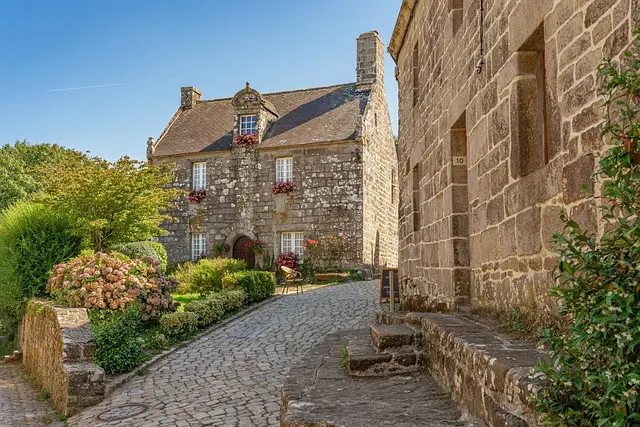
The Colorful South of France: Red, Yellow, and Pink Highlights
Red: The Ochre Village of Roussillon
While most towns in Provence are known for their earthy yellow tones, the village of Roussillon stands out with its fiery red hues.
The Red City
Nicknamed the Ochre City, Roussillon’s vibrant appearance comes from its rich deposits of ochre in the surrounding soil. The mineral’s natural pigments—ranging from yellow to orange to red—define the unique landscape and architecture of the town. This vivid and lively red palette makes Roussillon unmistakably different from other quaint French villages.
Today, Roussillon is recognized as a UNESCO World Heritage Site, celebrated for its unique geography and cultural significance. While the ancient craft of making natural ochre pigments has dwindled, a few local artisans still produce these traditional dyes, which are often used to coat the village’s houses. Visitors can purchase this natural pigment as a special souvenir in the local shops.
Tips:
• Roussillon is often visited alongside nearby Gordes (the Stone Village) and Fontaine-de-Vaucluse (the Spring Village). These three charming destinations are close to each other, making for an excellent day trip.
• The famous Abbaye de Sénanque is near Gordes, so it’s worth combining these stops into one itinerary.
Yellow: Sunflowers in Arles
If lavender lends Provence its iconic purple, then sunflowers give the region its golden yellow glow. Fields of sunflowers can be found across Provence, particularly around Arles.
Sunflower Season
The bloom period for sunflowers is relatively short, lasting about a month from mid-June to mid-July. While sunflowers are scattered throughout the region, the most concentrated fields are near Arles.
Arles
• Historical Importance: Established in 46 BC under Caesar’s rule, Arles was known as “Little Rome of the Gauls.” It later became a prominent center of early Christianity.
• Van Gogh’s Legacy: Between February 21, 1888, and May 3, 1889, Van Gogh lived in Arles, drawing inspiration from the town’s radiant sunlight and artistic atmosphere. He immortalized the town in many of his masterpieces, making Arles a pilgrimage site for art lovers. Visitors can explore the landscapes and locations featured in his paintings.
Pink: The Stunning Salt Lakes of Aigues-Mortes
In addition to Provence’s famous wines, the region offers a hidden pink treasure: the mesmerizing salt lakes near Aigues-Mortes.
Aigues-Mortes
Although not technically part of the Provence-Alpes-Côte d’Azur region, this medieval town lies just a short drive from Arles and is worth a visit. Located in a flat marshland area, Aigues-Mortes sits between “salt” and “sea,” surrounded by expansive salt flats.
The high salt concentration in the water creates a natural pink hue, with shades ranging from pale blush to vibrant fuchsia. This extraordinary environment, combined with the shimmering salt crystals, offers some of the most unique landscapes in Europe.
Flamingos and Nature
Beyond its breathtaking pink lakes, the surrounding wetlands are home to wildlife, including elegant flamingos, which can often be spotted in the shallow waters.
Tips:
• Aigues-Mortes dates back to Roman times and was historically known for salt production. Its medieval walls and historical charm make it a perfect blend of natural and cultural beauty.
• The intensity of the pink water can vary depending on the season and time of day, so plan your visit during optimal lighting for the most vivid colors.
Exploring these “red,” “yellow,” and “pink” highlights will introduce you to the diverse and colorful beauty of Southern France, from ochre villages and sunflower fields to enchanting salt lakes.
